autor: Richard Johnson
editora: Fourth Dimension
nº de páginas: 350
isbn: 978-83-948138-1-9
data: 2020
GRIM
HUMOUR
VOLUME 1
1983-1987
Highlights
and lowlights from the first 10 issues of this popular UK fanzine, back by no
demand whatsoever
Published
by Fourth Dimension 2020
©
Richard Johnson / Grim Humour / Fourth Dimension
Everything
published is © the respective contributors and cannot be reproduced without
permission.
Artwork
and Design by puppy38 and Richard Johnson
ISBN:
978-83-948138-1-9
Fourth
Dimension Records & Publishing
CONTENTS
Chapter
1
Introduction
– 7
Contributors
/ Credits – 10
Grim
Humour #1
Abbo
interview – 13
UK Decay
New Hope for the Dead CD review (2013) – 17
Gary
Glitter / Tenpole Tudor / The Defects review – 18
Chapter
2 - Grim Humour #2
Death in
June interview – 29
Virgin
Prune interview – 32
Killing
Joke interview – 42
Rising
from the Red Sands cassette review – 50
Chapter
3 - Grim Humour #3
Crass
interview – 57
Public
Image Limited review – 69
Flesh
For Lulu interview – 74
Chapter
4 - Grim Humour #4
In The
Nursery interview – 85
Record
and Tape reviews – 89
The Fall
interview – 91
The
Cramps review – 102
Sisters
of Mercy review – 102
Xmal
Deutschland review – 108
Chapter
5 - Grim Humour #5
The
Damned interview – 121
And Also
The Trees review – 131
Mick
Mercer interview – 135
Communicate
and Participate – 150
Chapter
6 - Grim Humour #6
Portion
Control interview – 159
And Also
The Trees interview – 167
Fool’s
Dance interview – 177
Cured
book review – 185
400
Blows interview – 193
Chapter
7 – Grim Humour #7
Nick
Cave interview – 205
The
vinyl Frontier – 209
Soundtracks
– 212
Sonic
Youth interview – 213
More
reviews – 220
Chapter
8 – Grim Humour #8
Ausgang
+ Rose of Avalanche review – 229
The Cure
review – 231
Record
Reviews - 232
The
Leather Nun interview - 236
The
Ramones interview - 243
Motivation
– 246
Chapter
9 – Grim Humour #9
Life
Would Be Grim Without Humour – 253
Cassette
and Safety In Numbers fanzine
Chapter
10 – Grim Humour #10
Head of
David interview – 257
Record
Reviews – 265
Venus
Fly Trap – 273
New
Order review – 282
Big
Black interview – 287
Coil
interview – 304
Alternative
TV interview – 314
Tearing
Down the Barricades – 331
(pieces
on Grim Humour by Andy Pearson, Harvey Francis, Steve Snelling, Mark Stevens,
Karren Ablazel, Mick Mercer, James Machin and Matthew Worley)
A Final
Word, by Richo – 345
Thank
You’s – 347
The
magazine, of course, also shuffled into view at a time when the musical
landscape was much different from how it is now. Cassette culture reigned in
the underground, John Peel’s radio show was the thing to listen to as a
teenager unable to keep up with everything (blank cassette at the ready to
record anything of interest, no less), flexidiscs were sometimes produced to
document, very cheaply, new artists via giveaways with publications (two even
appeared with Grim Humour irself in the early editions), vinyl was truly king
(long before, of course, becoming a vogue trend of limited editions mostly
dominated by the majors or boutique labels), record shops were places to hang
out at, live music was generally affordable, a variety of different youth
factions existed and occasionally looked horns, independent music hadn’t been
completely turned into yet another wholly makestable commodity nullifying its
original meaning )’indie’ as such, thankfully, wasn’t around when GH started
and certainly was not synonymous with lame guitar music), weekly papers existed
that were devoted to music, the Thatcher/Reagan political presence fuelled an
even greater sense of hopelessness which itself, it could be argued, inspired
many to kick against it, low-budget horror films created a huge public furore,
and certain groups entries into the charts embraced and occasionally clever,
wry or even more colourful descent into a possible sense of abandonment not
really seen since. Basically, it was a different world, without the instant
accessibility of the download. YouTube or ‘social networking’ sites reducing
everything to a level where little effort is involved in discovering exciting
new worlds and which, in turn, operates at a pace now so fast that
disposability looms an even larger presence than ever…
But
don’t get me wrong. There’s no misty-eyed sentimentality at work here. There’s
much to be said in favour of many things presently unfolding around us, plus
it´s likewise interesting to note that certain artists who helped to soundtrack
Grim Humour are still not only very much active but also continue to create
astounding and inspiring new work. Rather, I merely want to emphasise the ways
in which the parameters have shifted in more recent times. The world wasn´t
completely different when GH existed… but it was different enough and this in
itself created an environment perfect for certain people thus inclined to,
well, do something as they foundered to get a foothold.
Grim
Humour was but just one speck on a landscape where fanzines formed a
significant part of a network that could be readily tapped into in order to
discover more about certain areas of music and some of the ideas propelling
then. Titles such as Tone Death, Vague, Panache, Kill Your Pet Puppy, Chainsaw,
Artificial Life, Murder By Guitar, NMX, Ablaze!, Abstract and Rox! Constituted
a mere handful of titles to be found in the early 1980s. Sometimes they ere
found at gigs, sold at the Better Badges stall in London, or punted directly from
a carrier bag stuffed full of them. They could also be found in decent record
shops, although few could match the stock forever on sale at the Rough Trade
Shop in Talbot Road (who’d also willingly take on Grim Humour’zines following
some kind of deal in the shop’s backroom). Whilst there’s little use in
pretending each and every fanzine scribe got on with each other or even, in
many cases, the groups they covered, it cannot be denied that what
INTRODUCTION
Grim
Humour was as underground magazine, or ‘fanzine’ – call it what you will – that
existed between 1983 and 1993. It run for a total of eighteen editions during
its ten-year existence and was responsible for documenting a significant number
of bands largely aligned with or inspired by punk or post-punk music as well as
their cousins in industrial culture, the other reaches of electronic music and
so on. It also published features on writers, filmmakers and film directors,
columns, editorials that often spiraled into crevices foaming with vitriol, cartoon
strips, occasional artwork and a vast black tide of reviews largely scribed
whilst pepped up on adrenalin, frustration and gallons of cheap beer.
Throughout its lifetime it was widely recognized as one of the largest and most
popular UK publications of its kind, garnered a mountain of praise, equally
attracted much in the way of criticism or even downright envy, and helped pave
the way for several other concerns by a few of those responsible for putting it
together. Above all, it was always far more than just a mere ‘fanzine’.
Something
that probably warrants mentioning is that Grim Humour followed a tradition of
underground magazines assembled as much from old cut ‘n’ paste techniques as
teenage passion and a yearning to find a foothold in the world unfurling around
us. It began before DTP technology was available in every home and at a time
when buying glue came wedded to nefarious connotations (that’s the subtle
doffing of the cap out the way to a certain early punk fanzine). With no
computer programmes to assist us, we had to suffice with sheets of A3 paper, a
couple of battered Smith-Corona typewriters, scissors, Pritt-stick, Letraset
and a pile of comics, magazines and photocopies to cut up and crumbled as soon
as we applied it, sometimes the pasted cut-outs peeled at their corners and
sometimes we had to make do with a leaky black pen to help fill in the gaps. It
was always enjoyable, though, and never once lost this slant even as it began
to dabble with DTP technology in those final editions before it folded, took a
six year break and transmogrified into the equally hap-hazard Adverse Effect
(which still, after four published editions between 2000 and 2005, loosely
exists today as a mainly online mag).
They
together did made for a great source of information for those craving more than
whatever was offered by the weeklies. Despite often being badly written or
appearing like they’d been put together over a drunken weekend, there were
countless titles clearly produced by those articulate and impassioned enough to
perfectly reflect the energy of the times. Where Grim Humour fitted in with all
this is up to others to decide, but there was certainly a period of several
years where, helped along by national distribution courtesy of Southern
Records, it at least seemed as though it resided amongst the cream.
++++++++++++++++++++++++++++++++
What
follows in this compendium is brief background information to each edition of
Grim Humour, reprints of several of the original pages, a significant number of
re-edited highlights (interviews, features, reviews, etc.) given over to
additional information and new editorial comments (in italics, as opposed to
those original editorial comments that, simply, are not) where it is either
necessary or simply feels right, and a perhaps slightly carefree smattering of
pieces previously unpublished or even written more recently. Whilst the
original pages have been reprinted exactly as first published (unless stated
otherwise due to, for instance, ink colour changes), the reworked highlights
(and, indeed, lowlights) have been tweaked to banish previous typos or mistakes
without compromising their original form too heavily. When the ‘zine started
nobody involved could, in any sense, especially ‘write’ and had no illusions
otherwise. The proliferation of grammar and spelling mistakes pay testament to
this in the original publications, but it is apparent that, thankfully and
naturally, such matters got better with each passing edition. All the same,
outside the reprinted original pages, it is impossible to attack this material
without deploying the, uh, deft hand of experience. I hope readers will find
this acceptable and that the (cough) ‘magic’ of the original writing will not
have been compromised too heavily. Likewise, I hope you, being but one of the
said readers, will notice the improvements marking every step of the way from
the first edition to the tenth one, where this particular collection ends? The
confidence gained throughout this course should be more than evident as the
later editions here begin to galvanise a style, or even attitude, pushed even
further from #11 on, but there’ll be more of that in the next volume, should I
ever get to it (and I certainly hope to).
As I
write, my work on a project long thought about, discussed and then inevitably
buried and procrastinated over has only just commenced. I can only hope you’ll
find it as enjoyable as I presently am.
Richo
Editor:
Richard Johnson (a.k.a. ‘Richo’)
Sub-Editors:
Andy Pearson, Rob Hale, Andy Jones, Jim Crosland
Original
contributors: Karen Willoughby-White, Kerry White, Harvey Francis (a.k.a.
‘Havoc’), Gary Levermore, Gerald Houghton (R.I.P.), Hassni Malik, Mark Stevens
(a.k.a. Anton Black), Andrea Johnson, Mick Mercer, Jan R. Bruun, Tom Vague,
Molly,
Ian.
Acknowledgments
for the book: Mark Stevens (invaluable proofreading/editing help and
contributor), Michael Everett (a.k.a. ‘puppy38’, design), Andy Pearson (editing
and contributor), Marcin Barski (initial artwork assistance), Mick Mercer,
Steve Snelling, Karren Ablazel, Matthew Worley, Harvey Francis, Mark Perry,
Klive Humberstone, Steven Burrows, Alex Novak, Gary Warner, Stuart Curran,
Peter Gardner, Steve Spoon.
All
photos credited (where known) accordingly.
Apologies
if anybody has been overlooked. Please let me know if you feel you have been.
Special
thank you to Iwona Palka (support and perseverance beyond the call of duty).
Thanks
also to those who’ve offered help or even indirectly encouraging and motivating
everything, including Darren Crawford, Mark Stevens and Wojtek Kozielski.
Please
note that all of the opinions expressed within this book revert to the
individuals responsible for them and not Grim Humour/Fourth Dimension or those
amongst the board of editors.
All
writing not otherwise credited is by Richard Johnson.














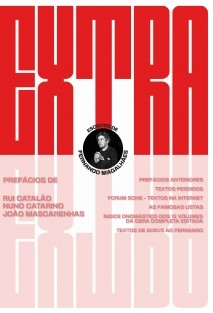
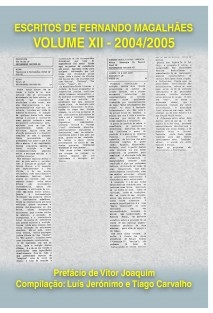




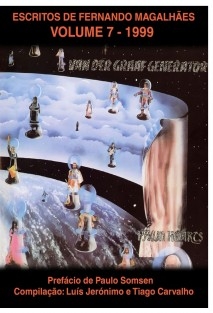
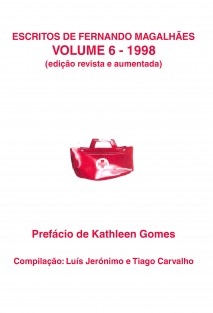
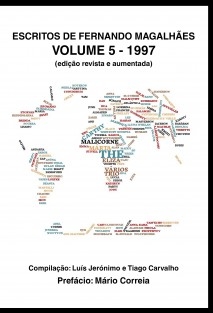
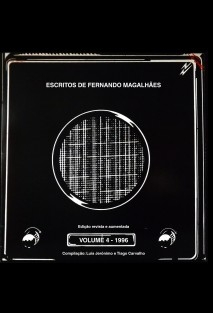
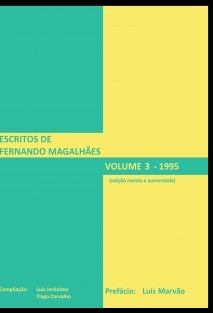



_Bubok.jpg)




























Sem comentários:
Enviar um comentário